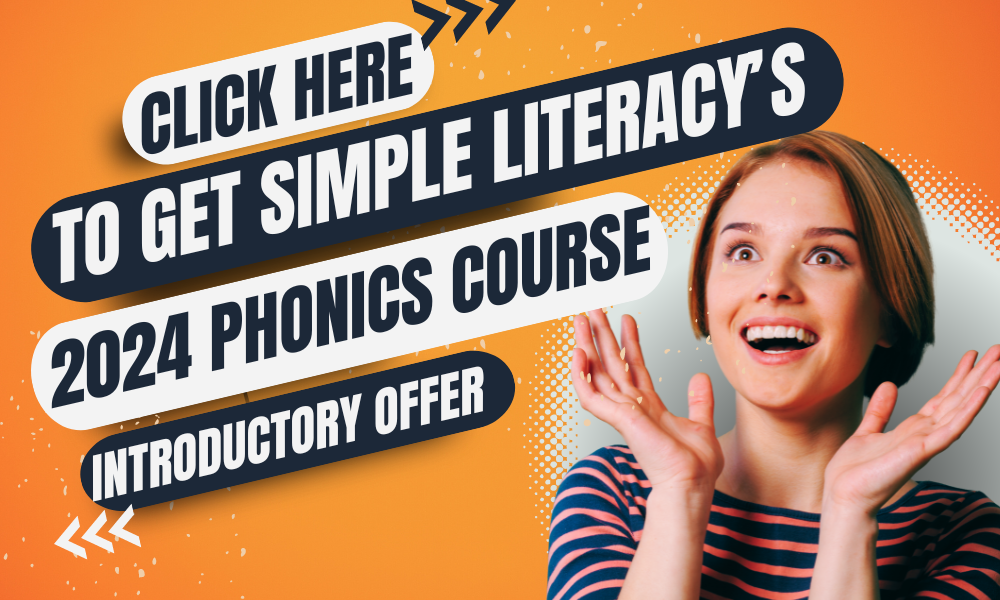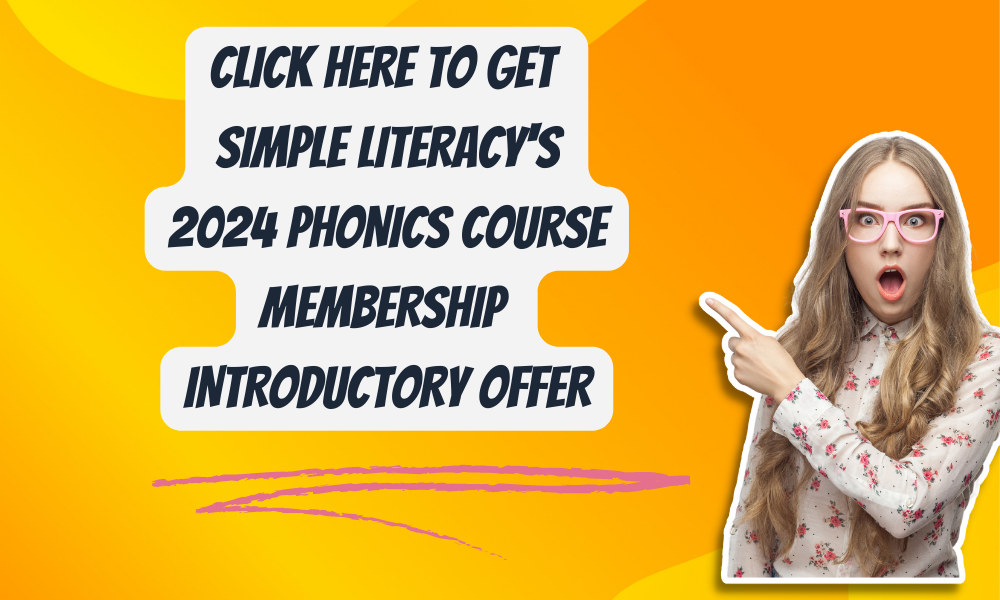How does Simple Literacy embrace the ultimate definition for instruction in phonics?
Sep 08, 2023
You are never supposed to ask a woman her age, or at least that is how I was raised, but to give you a clue I was around for the “Hooked on Phonics” craze. I never did this program but it is amazing to think that the conversation of phonics and its role in literacy is still being debated today. Research continues to be conducted that proves that science-based literacy instruction is best. What is the definition of instruction that is science-based? Instruction that has research to prove it works. The great news is that this research exists! The unfortunate news is that it is not commonly known and understood. The research data proves that there are significant changes in brain connections when literacy instruction is taught a certain way. Systematic, explicit, multisensory letter-sound instruction helps develop brain connections to create the building blocks of literacy…phonics.
Exactly what is phonics and the definition for instruction?
Understanding the definition of phonics is crucial to developing a strong literacy foundation in our students. Treiman (2018) eloquently explains the definition of phonics instruction: “Phonics instruction teaches that the spellings of words encode the phonemes within them by virtue of systematic links between letters or groups of letters and phonemes.” Basically, letters and sounds have relationships, they do not stand alone. Therefore, when teaching phonics our focus should be on cementing these relationships in our students’ brains.
Were you ever taught how to instruct your students (or children) using phonics? Read this if you answered NO just like I did.
Yes, I did just air my dirty laundry…yikes! One goal of mine for Simple Literacy is to be transparent and authentic. So, I am going to give it to you straight, I NEVER taught phonics until a few years ago. Ouch! That’s embarrassing to put out into the world. Here’s the truth, I was not taught to teach it. I actually knew very, and I mean very little about it. That ole saying “you know better you do better” applies here. As soon as I knew how much I didn’t know I got busy and tried to fill in the blanks. This is why at Simple Literacy I have devoted my initial courses and resources specifically to phonics instruction.
How does phonics work with Simple Literacy courses and resources?
Somedays I feel like I am just surviving. The balancing act with family, work, and friends is often more like tightrope walking between two high-rise buildings. This is why simplifying daily family routines is essential to keeping my sanity and quite frankly everyone else’s in my family too. One daily routine that almost put me six feet under is now a breeze – DINNER! Yep, you heard me right, that dreaded time of day when you have zero left in the tank and are now supposed to whip up a delicious meal that all family members will jump for joy over. This daily dark cloud over me - you know the one - had to change. Now, as a family, we collaborate and develop a 10-meal dinner rotation. It is a simple way to save time, money, and headaches because everything is streamlined. Simple Literacy works the same way.
As an educator, I have found simplifying my instruction is beneficial to me BUT also to my students. Phonics does not need to be complicated. With streamlined instruction and resources, it can be simplified. This is why you will see the same sequential pattern in all of my courses and resources regardless of the target skill. Everyone using Simple Literacy courses and resources becomes familiar with the format and purpose. Once students reach a point in the sequence where they have enough of a phonics foundation (Lesson 16) the Simple Literacy courses and resources will have differentiated levels. Allowing educators and parents to meet all students' needs.
This plug-and-play system is much like my weekly dinner plan. It saves everyone time, money, and headaches BUT even more importantly it embraces the definition for instruction in phonics by helping to build systematic links between letters and sounds in our students’ brains for strong literacy foundations.
What does the definition for instruction in phonics look like in action?
No matter who you are, what language you speak, or where you live in the world, we ALL remember MARCH of 2020. Although, we would all probably like to forget it I also feel like it is one thing that unites the entire world. One experience we can all relate to and remember. In March of 2020, my children were 5 and 3, both attending preschool. March 14, 2020, was the last day that I ever picked both of my children up from preschool together. They had been attending it together for the past two years. I vividly remember driving up to the carpool line and having a feeling like a heavy weight was on my chest. I knew that something was about to change. Well as we all know it did and the next week I found myself at home with my beautiful family, like all other families trying to develop new routines for daily life. The preschool did a fantastic job of providing at-home packets and hosting weekly virtual calls so the kids could see their friends but with extra hours in the day, I figured why not start teaching my kiddos some phonics.
Fortunately, at this point in my life, I knew better and knew why phonics was important to reading. If I was to learn from my past mistakes, now was the time to do better. I started simple and taught a few letters at a time, then I taught them to blend one vowel and one consonant together and eventually moved into CVC words. Mastery happened quickly for both kiddos, check out this video of my three-year-old daughter.
My simple phonics instruction allowed my daughter to master her letter sounds, learn how to blend them together, and then discover how letter combinations make real words that have meaning. My belief is that this mastery happened quickly because I followed the definition for instruction in phonics - providing explicit, multisensory practice to teach letter-sound relationships.
Why is phonics important to reading and how can Simple Literacy up your phonics instruction?
I might be a bit biased but when I see the video that my daughter made for her Grandma it is clear why phonics is important to reading. However, if that video didn’t convince you, maybe some research examples will.
AND if seeing it in action and the research didn’t convince you maybe another video will seal the deal. This is a special example because it is from the kindergarten class I ran in my basement in 2020. YES, you heard it right. My son was heading into kindergarten and schools were virtual. As an educator who was currently staying at home with my youngins, it was an obvious choice to homeschool my son and open it up to others. It was an INCREDIBLE experience, one of the greatest achievements in my life. In a time when everyone was unsure of day-to-day life, I was able to try to bring a little consistency and “normalcy” to seven precious, fun, loving six and seven-year-olds. Remember, at this point, I knew how to do better so you better believe these kiddos were starting off day one of kindergarten doing phonics. Check out this video to see the reading achievements made in month one of our Kindergarten school year.
How does phonics instruction work for your students?
It Works Okay – I can do better!
It is BROKEN – I don’t do it at all or don’t have a clue how to do it!
No matter which answer fits you best, Simple Literacy is here to serve and support you.
5 Ways Simple Literacy embraces the ultimate definition for instruction in phonics by building “the systematic links between letters or groups of letters and phonemes.”
1. Explicit
2. Multisensory
3. Repetitive
4. Engaging
5. Confidence building
Although I am grateful 2020 is in the rearview mirror it did teach me so much about life. To enjoy the simple things like a sunset or sunrise. Do not sweat the small stuff, rather look to what brings you joy and peace. To persevere. Each person’s literacy journey is different. I believe that knowing the truth about how we acquire literacy is critical to helping all students succeed. This is why Simple Literacy is committed to creating courses, resources, and a community that nurtures and fosters building these systematic links in our students. Providing a place of joy and peace where students persevere through challenges one step at a time.
Treiman, R. (2018). What Research Tells Us About Reading Instruction. Psychological Science in the Public Interest. 19, 1 - 4. doi: 10.1177/1529100618772272


